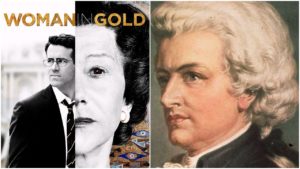
Opera Meets Film: How An Aria From ‘Don Giovanni’ Establishes Tone & Structure In Helen Mirren’s ‘Woman in Gold’
By David Salazar“Opera Meets Film” is a feature dedicated to exploring the way that opera has been employed in cinema. We will select a section or a film in its entirety, highlighting the impact that utilizing the operatic form or sections from an opera can alter our perception of a film that we are viewing. This week’s installment features Simon Curtis’ “Woman in Gold.”
Early on in this film, based on a true story, we hear Fritz Altmann sing “Don Giovanni’s” serenade to his wife Maria during their wedding. Fritz is established as an opera singer, which makes the use of opera appropriate given the context.
But the aria, “Deh, vieni alla finestra,” works on a number of subtextual levels that inform the audience about the story and its structure. On a superficial level, it’s a joyous and romantic piece that would be perfectly suitable for a man to give his bride. It’s in a major key and in the context of the festivities it is perfect. Mozart is Austria’s famed composer and it also helps to establish and reinforce the audience’s understanding of the world where the drama takes place.
But it should not be lost on anyone that “Don Giovanni” is not a comedy, but a Dramma giocoso, a work that is both comic and tragic in the same breath. In the context of this scene, this is aria dovetails with the couple’s emotional high point while also suggesting subtextually that it all goes downhill from here. The two characters will find themselves continually cornered by the Nazis as they attempt to make their escape to America.
But the choice of the aria is the lifeblood of how the entire movie functions as a unit. For “Woman in Gold,” despite the tragedy of the past, is also a comedy in the present. The film is split into a darker story in which Fritz and Maria leave Austria and her parents in the hands of the Nazis in order to survive. Shot in desaturated palette, there is nothing comic or “fun” about this section of the film. It is the “dramma,” the tragedy.
But then the present-tense of the film’s story, which follows an elderly Maria attempting to reconcile with that past and regain the possession of a famous painting of her aunt Adele is a full-on comedy. As portrayed by Dame Helen Mirren, Maria can’t stop cracking jokes and seems to constantly deliver punchlines, even in the most tense moments. She’s almost the Leporello of this story, the sidekick to Randy Schoenberg as he does his best to make her case.
This portion of the film, with its brighter color palette and lighter tone, is undeniably the “giocoso” element and the fact that it ultimately comes to happy ending reinforces its notion as a comedy in the traditional sense of the word. In the context of the whole package, the film’s director Simon Curtis suggests that the present can provide respite from the tragic past.
There are a few other vocal passages in the film, but most of them are simply filler or background noise to the story. In fact, it is with the “Don Giovanni” section that film itself kicks off the narrative that focuses on the past; prior to this moment, the audience is given a few intermittent glimpses. This signals the importance of the aria in establishing the film’s tone and story dynamics.


